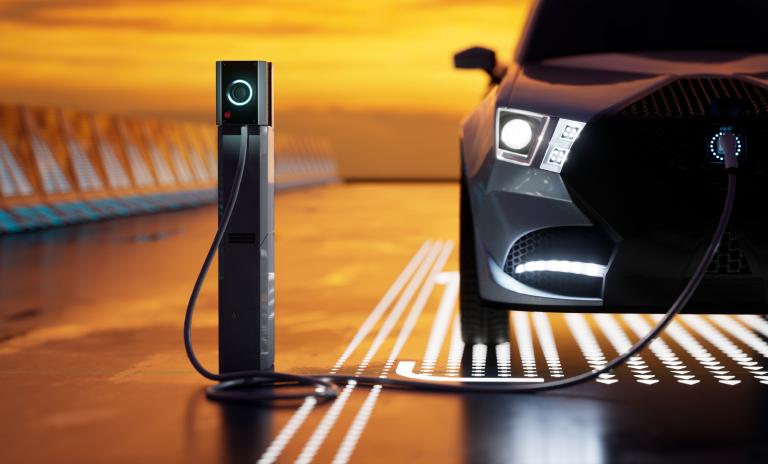The automotive world is experiencing unprecedented change. By 2040 the industry will be polarized, automated, connected and electrified – or PACE, for short.




Electrification – one of the four PACE megatrends highlighted in the Roland Berger Automotive Outlook 2040 – will be a key topic for automotive players over the next decade and a half. The direction of change cannot now be reversed: The share of BEVs (battery-electric vehicles) is expanding rapidly around the globe, albeit with some regional variation. The growing share of electric vehicles has a knock-on effect on supply chains, downstream business and target markets, creating challenges and opportunities. For example, exciting new business models are emerging such as V2G (vehicle-to-grid) and V2H (vehicle-to-home) systems, creating cost savings for customers and new potential for automakers and suppliers.
Recent years have seen intense hype around EVs. Now, expectations are being revised downwards somewhat due to a new awareness about battery supply chain risks, the announcement of reduced sales targets by automakers and the ending of tax and purchase incentives in many markets. However, it is clear that the trend towards electric powertrains is unstoppable: As fleet emissions standards tighten, dual powertrain strategies become unsustainable and the ramp-up of new BEV models continues apace. We estimate that the adoption of BEVs will grow in all segments, hitting between 64 (pessimistic scenario) and 71 percent (base case) in 2040.
What is also clear is that differences in adoption rates between countries and regions will persist. At the extreme end, we expect Europe to achieve a 99 percent share of BEVs in newly sold vehicles by 2040, with e-fuels playing a very minor role. In China the figure will be somewhat lower, between 70 and 85 percent, while North America will lag behind at just 42 to 60 percent. The rest of the world is forecast to see a 50 percent share of BEVs in new vehicle sales by the end of the next decade.
BEVs are currently significantly more expensive than comparable ICE vehicles, but we expect sticker price parity to be reached well before 2040. Battery pack prices have fallen by around 80 percent over the last ten years and future innovations in cell chemistry and design could reduce their price still further, as well as increasing energy density and cutting charging times. However, uncertainty remains around the cost of raw materials for batteries owing to potential disruptions to supply chains. The shift away from fossil fuels will create new dependencies on the Global South, home to a large share of raw materials, and China, which directly or indirectly controls much of the refining and supply of battery materials. In response, both the United States and Europe have already passed legislation that aims to reduce this dependency, for example by promoting the expansion of local battery manufacturing capacities.
Downstream automotive business will face both challenges and opportunities. BEVs generate around 30-35 percent less demand for the traditional parts used in ICE (internal combustion engine) vehicles – but, of course, they feature other parts that counterbalance this, such as HV (high-voltage) batteries, which will be of vital importance for the aftermarket. That said, HV batteries are generally very reliable, and when they do fail, customers may simply decide to scrap the vehicle rather than choosing to repair or replace the battery, both of which are costly options.
The spread of BEVs will have a positive impact on electricity grids and green energy thanks to their ability to act as energy storage units in V2H (vehicle-to-home) and V2G (vehicle-to-grid) systems. The latter is particularly attractive to customers, as it allows them to sell excess electricity back to the electricity grid during peak demand times, earning revenue or credits on their electricity bills. In the event of emergencies or power outages, V2G can also provide power to homes, businesses and critical infrastructure, thereby improving energy security.
Alternative fuels such as hydrogen have a high primary energy requirement and are therefore low on efficiency, which is a major disadvantage compared to battery technology. They do, however, have advantages where high energy density is needed over long distances. For this reason, they may have some impact on the commercial sector, especially heavy-duty, long-haul trucks. E-fuels – synthetic fuels produced from renewable sources – are currently more expensive than gasoline or electricity and are likely to remain so over the coming decade and a half, resulting in negligible market share.
Register now to access our “Automotive 2040: Electrification and alternative fuels” spotlight topic. Furthermore, you will automatically receive our spotlight topics and regular news.
